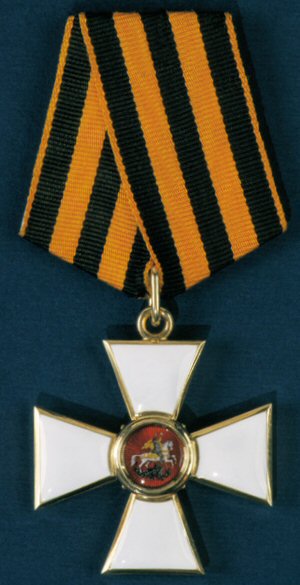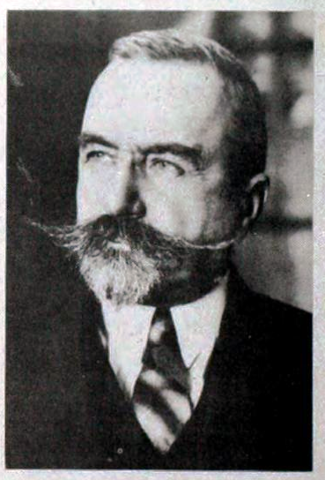|
Mikhail Kvetsinsky
:''Kvetsinsky leads here. For the Polish variant, see Kwieciński'' Mikhail Fyodorovich Kvetsinsky (russian: Михаи́л Фёдорович Квецинский) (January 3, 1866 – March 31, 1923), also known as Michael (von) Kwetzinsky, was a Russian officer and a military administrator. He held notable command posts in the Russian Far East, during the Russo-Japanese War, during the First World War and during the Russian Civil War, when he was one of the leaders of the White Army of the North during the North Russia Intervention. Kvetsinsky became a Major-General in 1910 and a Lieutenant-General in 1915. He fled to Norway together with his superior Yevgeny Miller in 1920 and lived as a cab driver and labourer at a brewery at Lillehammer until his death three years later. His son Wassily von Kwetzinsky became a music critic and cultural figure in Norway. The Norwegian pianist Joachim Kwetzinsky is a stepson of his grandson. Background He was born in Moscow Governor ... [...More Info...] [...Related Items...] OR: [Wikipedia] [Google] [Baidu] |
Kwieciński
Kwieciński (feminine: Kwiecińska, plural: Kwiecińscy) is a Polish surname. It may refer to: * Andrzej Kwieciński (born 1984), Polish composer * Czesław Kwieciński (born 1943), Polish wrestler * Grant Kwiecinski (born 1990), American musician * Ireneusz Kwieciński (born 1974), Polish judoka * Rafał Kwieciński (born 1975), Polish footballer * Włodzimierz Kwieciński (born 1955), Polish karateka See also * *Mikhail Kvetsinsky :''Kvetsinsky leads here. For the Polish variant, see Kwieciński'' Mikhail Fyodorovich Kvetsinsky (russian: Михаи́л Фёдорович Квецинский) (January 3, 1866 – March 31, 1923), also known as Michael (von) Kwetzinsky ... also known as Michael (von) Kwetzinsky (1866–1923), Russian officer and a military administrator {{surname Polish-language surnames ... [...More Info...] [...Related Items...] OR: [Wikipedia] [Google] [Baidu] |
Order Of Saint George
The Order of Saint George (russian: Орден Святого Георгия, Orden Svyatogo Georgiya) is the highest military decoration of the Russian Federation. Originally established on 26 November 1769 Julian (7 December 1769 Gregorian) as the highest military decoration of the Russian Empire for commissioned officers and generals by Empress Catherine the Great.Hurley, C. ''Russian Orders, Decorations, and Medals Under the Monarchy''. Harrison & Sons., Ltd., London. 1935. After the October Revolution in 1917, it was awarded by the White movement under Alexander Kolchak until their collapse in 1921. The order was revived in the Russian Federation on 8 August 2000 by Decree №1463 of the President of Russia. The current award criteria were amended on 7 September 2010 by Presidential Decree 1099. Statute of the Order of St. George The current Order of Saint George is awarded to highest and senior military officers for the conduct of military operations to protect the M ... [...More Info...] [...Related Items...] OR: [Wikipedia] [Google] [Baidu] |
General Staff Academy (Imperial Russia)
The General Staff Academy () was a Russian military academy, established in 1832 in St.Petersburg. It was first known as the Imperial Military Academy (Императорская военная академия), then in 1855 it was renamed Nicholas General Staff Academy (in commemoration of Emperor Nicholas I) and in 1909 - Imperial Nicholas Military Academy (Императорская Николаевская военная академия). According to Peter Kenez, "The Nicholas Academy, or Staff College, gave the highest military education in Russia. The Academy was organized, as were many institutions of the Russian army, on the German model. Only the best officers, after some years of service in regiments, could enter this academy. Of the annual 150 graduates, the 50 best students received appointment at the General Staff and the others returned to their regiments. Practically the entire high command of the Russian army in the World War and the Volunteer Army in the Civil W ... [...More Info...] [...Related Items...] OR: [Wikipedia] [Google] [Baidu] |
Joachim Kwetzinsky
Joachim Victor Birkeland Kjelsaas von Kwetzinsky-Stetzenkow (born 8 April 1978), known as Joachim Kwetzinsky, is a Norwegian pianist. Background He is a son of the author Oddbjørn Birkeland and the pianist Berit Kjelsaas Kwetzinsky, and a stepson of the scenographer Truls Kwetzinsky (born Wassily Michail Fjodor Grossow von Palm von Kwetzinsky-Stetzenkow), who is himself a son of the Russian-born music critic Wassily von Kwetzinsky and a grandson of the Russian general Mikhail Kvetsinsky, who both came to Norway in 1920 as refugees from the Russian Revolution.Russisk flagg i et norsk kloster " ''Hellige Nikolai Menighets Blad'', No. 3, pp. 12–13, 2009 Education and work Joachim Kwetzinsky studied at the |
Arbeiderbladet
''Dagsavisen'' is a daily newspaper published in Oslo, Norway. The former party organ of the Norwegian Labour Party, the ties loosened over time from 1975 to 1999. It has borne several names, and was called ''Arbeiderbladet'' from 1923 to 1997. Eirik Hoff Lysholm is editor-in-chief. The newspaper depends on economic support from the Norwegian Government. History ''Dagsavisen'' was established by Christian Holtermann Knudsen in 1884 under the name ''Vort Arbeide'' ('Our Work' in archaic Riksmål), and was affiliated with the trade union center ''Fagforeningernes Centralkomité''. Holtermann Knudsen also had to establish his own printing press since the existing printing presses did not want to be affiliated with a labourer's newspaper. The fledgling project was marred by economic problems, and the burden of writing, editing, and printing lay chiefly on Knudsen. In 1885 the newly founded association ''Socialdemokratisk Forening'' formally took over the newspaper. The name was chan ... [...More Info...] [...Related Items...] OR: [Wikipedia] [Google] [Baidu] |
Wassily Von Kwetzinsky
Wassily von Kwetzinsky-Stetzenkow (born 26 August or 7 September 1898 in Nikolsk-Ussuriysky in Russia, died 17 November 1970 in Oslo, Norway) (russian: Василий Михайлович Квецинский; Vasily Mikhailovich Kvetsinsky) was a Russian-born Norwegian music critic and writer. He came to Norway in 1920 as a refugee from the Russian Revolution together with his father, General Mikhail Kvetsinsky.Russisk flagg i et norsk kloster " ''Hellige Nikolai Menighets Blad'', No. 3, pp. 12–13, 2009 He served in the Russian Army where he became a captain in the Chasseur Regiment on 25 September 1917. In July 1919 he joined the |
Aftenposten
( in the masthead; ; Norwegian for "The Evening Post") is Norway's largest printed newspaper by circulation. It is based in Oslo. It sold 211,769 copies in 2015 (172,029 printed copies according to University of Bergen) and estimated 1.2 million readers. It converted from broadsheet to compact format in March 2005. ''Aftenposten''s online edition is at Aftenposten.no. It is considered a newspaper of record for Norway. ''Aftenposten'' is a private company wholly owned by the public company Schibsted ASA. Norway's second largest newspaper, ''VG'', is also owned by Schibsted. Norwegian owners held a 42% of the shares in Schibsted at the end of 2015. The paper has around 740 employees. Trine Eilertsen was appointed editor-in-chief in 2020. History and profile ''Aftenposten'' was founded by Christian Schibsted on 14 May 1860 under the name ''Christiania Adresseblad''. The following year, it was renamed ''Aftenposten''. Since 1885, the paper has printed two daily editions. A Sund ... [...More Info...] [...Related Items...] OR: [Wikipedia] [Google] [Baidu] |
Yevgeny Miller
Eugen Ludwig Müller (russian: Евге́ний-Лю́двиг Ка́рлович Ми́ллер, tr. ; 25 September 1867 – 11 May 1939), better known as Yevgeny Miller, was a Russian general of Baltic German origin and one of the leaders of the anticommunist White Army during and after the Russian Civil War (1917–1922). After the civil war he lived in exile in France. Kidnapped by Soviet intelligence operatives in Paris in 1937, he was smuggled to the USSR and executed in Moscow in 1939. Early life Miller was a career officer born to a Baltic German aristocratic family in Dünaburg (now Daugavpils, Latvia). After he graduated from the General Staff Academy, he served with the Russian Imperial Guard. Between 1898 and 1907, he was a Russian military attaché in several European capitals, such as Rome, The Hague and Brussels. During the First World War, he headed the Moscow Military District and the 26th Army Corps and was promoted to the rank of lieutenant general. Civil W ... [...More Info...] [...Related Items...] OR: [Wikipedia] [Google] [Baidu] |
Major-General
Major general (abbreviated MG, maj. gen. and similar) is a military rank used in many countries. It is derived from the older rank of sergeant major general. The disappearance of the "sergeant" in the title explains the apparent confusion of a lieutenant general outranking a major general, whereas a major outranks a lieutenant. In the Commonwealth and in the United States, when appointed to a field command, a major general is typically in command of a division consisting of around 6,000 to 25,000 troops (several regiments or brigades). It is a two-star rank that is subordinate to the rank of lieutenant general and senior to the rank of brigadier or brigadier general. In the Commonwealth, major general is equivalent to the navy rank of rear admiral. In air forces with a separate rank structure (Commonwealth), major general is equivalent to air vice-marshal. In some countries including much of Eastern Europe, major general is the lowest of the general officer ranks, with no ... [...More Info...] [...Related Items...] OR: [Wikipedia] [Google] [Baidu] |
North Russia Intervention
The North Russia intervention, also known as the Northern Russian expedition, the Archangel campaign, and the Murman deployment, was part of the Allied intervention in the Russian Civil War after the October Revolution. The intervention brought about the involvement of foreign troops in the Russian Civil War on the side of the White movement. The movement was ultimately defeated, while the Allied forces withdrew from Northern Russia after fighting a number of defensive actions against the Bolsheviks, such as the Battle of Bolshie Ozerki. The campaign lasted from March 1918, during the final months of World War I, to October 1919. Reasons behind the campaign In March 1917, after the abdication of Russian Tsar Nicholas II and the formation of a provisional democratic government in Russia, the U.S. entered World War I. The U.S. government declared war on the German Empire in April (and later upon Austria-Hungary) after learning of the former's attempt to persuade Mexico to join ... [...More Info...] [...Related Items...] OR: [Wikipedia] [Google] [Baidu] |
White Army
The White Army (russian: Белая армия, Belaya armiya) or White Guard (russian: Бѣлая гвардія/Белая гвардия, Belaya gvardiya, label=none), also referred to as the Whites or White Guardsmen (russian: Бѣлогвардейцы/Белогвардейцы, Belogvardeytsi, label=none), was a common collective name for the armed formations of the White movement and anti-Soviet governments during the Russian Civil War. They fought against the Red Army of the Bolsheviks. When it was created, the structure of the Russian Army of the Provisional Government period was used, while almost every individual formation had its own characteristics. The military art of the White Army was based on the experience of the First World War, which, however, left a strong imprint on the specifics of the Civil War. History The name "White" is associated with white symbols of the supporters of the pre-revolutionary order, dating back to the time of the French Revolution, ... [...More Info...] [...Related Items...] OR: [Wikipedia] [Google] [Baidu] |


